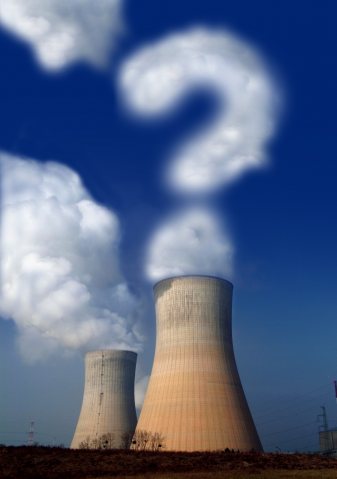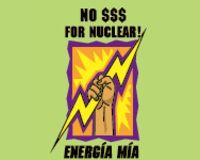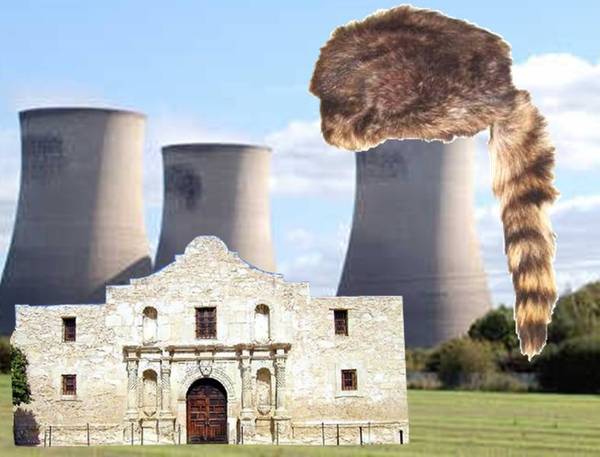In case you didn’t catch our editorial in the San Antonio Express News this summer, it’s worth repeating.
NUCLEAR REACTORS ARE TOO EXPENSIVE
By Matthew Johnson – Express-News Guest Voices
CPS Energy announced its cost estimate for two more nuclear reactors at the South Texas Project near Bay City last week. The $13-billion price tag is the latest estimate in a sustained and systemic low-balling by utilities wishing to receive government subsidies.
CPS’ partner, NRG Energy, recently pegged the cost of units 3 and 4 at $10 billion, a figure that has jumped nearly 50 percent from its original estimate of $5.4 billion.
Other analyses, however, have estimated the cost of two new reactors to be nearly 100 percent higher than the CPS estimate. Former Texas Office of Public Utility Counsel official Clarence Johnson recently estimated the cost of STP expansion to be $20 billion to $22 billion, while nuclear engineer and president of the Institute for Energy and Environmental Research Dr. Arjun Makhijani estimated a cost of up to $17.5 billion in 2008.
A new study by Mark Cooper, of the Vermont Law School, analyzed numerous cost estimates of the so-called nuclear renaissance beginning around 2001. He discovered that early estimates of new nuclear reactors were made predominantly by industry and academics and were optimistic and eager to rejuvenate the industry.
Since then, utilities’ estimates have shown similar wishful thinking, but continue to rise. Independent analysts and Wall Street, Cooper shows, offer the most realistic estimates that are much higher.
The history of the STP expansion effort follows this pattern. CPS and NRG have been attempting to gain support in federal, state and city government since they submitted their application to build two new reactors to the Nuclear Regulatory Commission in 2007.
Wall Street estimates also place a similar and continuously rising price tag on new reactors. The bond-rating agency Moody’s predicted $5,000-6,000 per kilowatt for new reactors almost two years ago, which translates to $16.2 billion for STP expansion, and recently indicated that it could downgrade bond ratings on utilities constructing new nuclear reactors.
The federal government established an $18.5 billion subsidy to back loans taken out to construct new reactors. STP expansion advocates brag about being on the short list for part of these loan guarantees, but proponents and opponents agree that more reactors won’t be built if the feds don’t pony up the dough.
The reason is simple. Investors are squeamish to lend money for projects with such a high risk of defaulting on repayments. Delay and cost overruns increase risk. STP’s original reactors took eight years longer than planned to complete and costs soared six times over original estimates.
CPS Energy has faster and cheaper alternatives. Their recent announcement on the 27 megawatt solar plant in West Texas, the Mission Verde plan to develop 250 megawatts of solar and new wind contracts plus their goal to save 771 megawatts through energy efficiency by 2020 are shining examples of the path they should focus on to keep rates stable and low in the future. This path also creates more local jobs.
City Council will soon have to decide on San Antonio’s involvement in new reactors. It must vote no on nuclear to protect San Antonians from bearing the overwhelming economic burden of building costly, dangerous and unnecessary nuclear reactors.
Matthew Johnson is an energy policy analyst for Public Citizen’s Texas office.
 Nuclear or Not? That’s the question on everyone’s lips in San Antonio these days, but some are still waiting to hear from the experts before they make a decision. What are the consequences and risks? What affordable and safe options exist? We want to know, but we want to hear from folks we can trust.
Nuclear or Not? That’s the question on everyone’s lips in San Antonio these days, but some are still waiting to hear from the experts before they make a decision. What are the consequences and risks? What affordable and safe options exist? We want to know, but we want to hear from folks we can trust. UPDATE: The streaming audio from last night’s event was, unfortunately, very hard to listen to — but folks who weren’t willing to wade through the feedback can watch our video of the town hall in its entirety, which we should be able to post in the next couple days 🙂
UPDATE: The streaming audio from last night’s event was, unfortunately, very hard to listen to — but folks who weren’t willing to wade through the feedback can watch our video of the town hall in its entirety, which we should be able to post in the next couple days 🙂
 As many of you already know,
As many of you already know, 



